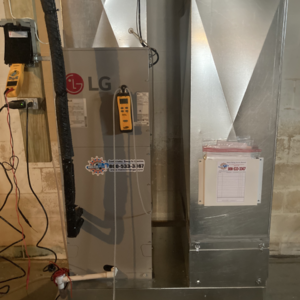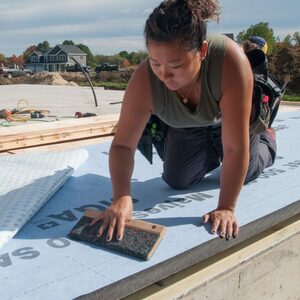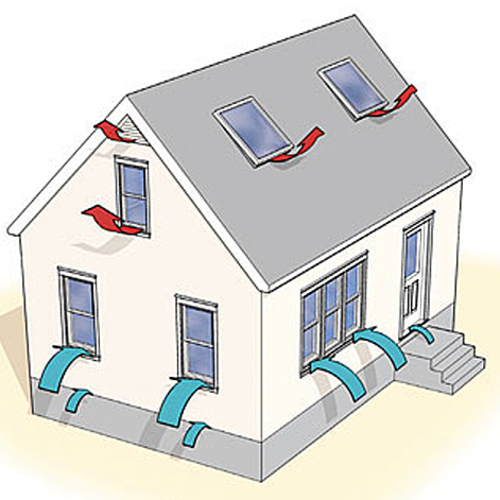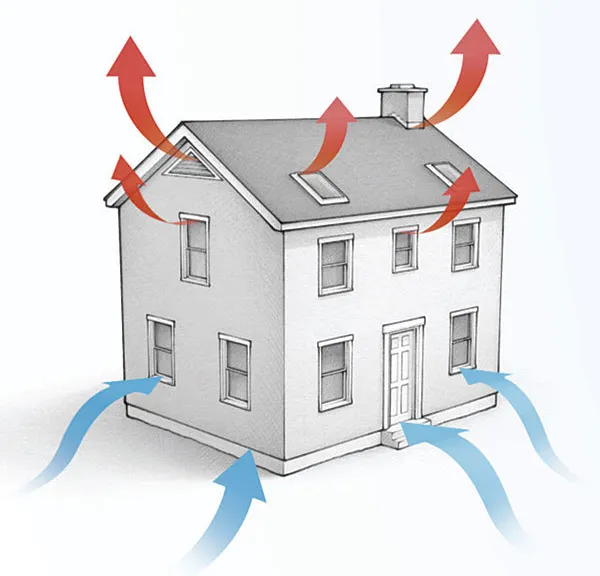
Airflow is critical to the performance of forced-air systems. Without enough airflow, a furnace, heat pump, or air conditioner will struggle to deliver adequate heating and cooling. Poor airflow also drives up energy costs and shortens the life of parts like fans, heat exchangers, and compressors.
The blower fan provides the force that moves air through the duct system and living space. A fan’s ability to move air depends on how much resistance it encounters. One way to gauge this resistance is by measuring the pressures generated in the ductwork while the fan is running. These measurements—known as static pressures—can yield powerful insights: Is the fan operating within its design parameters? How much air is it moving? What components of the duct system create the most resistance?
These measurements are an important tool for commissioning, servicing, and troubleshooting forced-air systems and for learning what works and what doesn’t. Energy auditors, home energy raters, and HVAC technicians already own most of the tools they need to get started. In Part One of this two-part series, I’m going to explain static pressures, then walk readers through measuring Total External Static Pressure (TESP). In Part Two, we’ll use TESP to estimate system airflow. We’ll then see how additional static pressure measurements can help us locate and fix system components contributing to airflow problems.
What is static pressure?
The atmosphere surrounds and exerts pressure on us. At sea level, this pressure is about 14.7 pounds per square inch (psi). Fans move air by creating zones of slightly higher and lower pressure. Most furnaces and air handlers use centrifugal or “squirrel cage” fans. In these fans, the rotation of the blades creates a low-pressure zone in the center of the fan and a high-pressure zone at its outlet…
Weekly Newsletter
Get building science and energy efficiency advice, plus special offers, in your inbox.

This article is only available to GBA Prime Members
Sign up for a free trial and get instant access to this article as well as GBA’s complete library of premium articles and construction details.
Start Free TrialAlready a member? Log in















7 Comments
Jon, I wish this series had come out a few months ago. I had to piece this information together from a variety of sites, and eventually purchased a differential magnahelic gauge in hand to understand the procedures to balance my system. Your set of articles on this topic will likely be an excellent “goto” series when folks ask these questions here. Great work stepping through the topics so far in clear and concise language.
Balancing ERV/HRV topics come up quite often in the Q/A so if you’re looking for suggestions for future articles….
Dennis,
Couldn't agree more. Jon's articles are consistently packed with clearly explained, useful information. I keep them all for future reference.
Thank you both! I'll add ERV/HRV balancing to my list of future topics.
“[Deleted]”
The second diagram, with just three test ports, represents the typical all-electric heat pump. The blower and the refrigerant coil are in the same cabinet, and TESP is the pressure difference between the inlet and the outlet of that box.
The first diagram is for a fossil fuel furnace with an add-on refrigerant coil. This could either be a furnace with conventional AC or a dual-fuel system (furnace with add-on heat pump coil). Since the furnace could be installed with or without the coil, the TESP rating is taken at the inlet and outlet of the furnace itself (ports 2 & 3). If we had a furnace with no external coil, we wouldn't need port #4--we'll use it to measure the pressure drop across the external coil, which can add a lot to the supply-side static reading.
“[Deleted]”
I always feel like I learn so much from reading Jon’s articles. Can’t wait for part 2, and that future ERV/HRV balancing article.
Log in or become a member to post a comment.
Sign up Log in